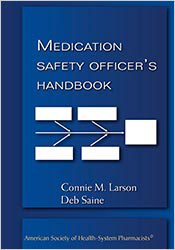Examples of Transformational Change
Diabetes Care Collaborative Practice
In another study, pharmacists at two primary care clinics provided diabetes education, initiated or adjusted insulin therapy, and ordered pertinent laboratory tests to monitor patients’ response to therapy. Pharmacists also scheduled patient appointments with physicians, dietitians, social workers and psychologist, when appropriate. Patient—pharmacist interactions occurred face-to-face and by telephone. HbA1c concentrations were decreased from 11.1% to 8.9% (p=0.00004). After subtracting the cost of the pharmacists’ services and medical center charges for the appointment, the study saved the medical center a total of $103,950. See Coast-Senior EA., Kelley CL, Kelley CL, et al. Management of patients with type 2 diabetes by pharmacists in primary care clinics. Ann Pharmacother 1998;32:636-41.
Pharmacist-Run Hypertension Clinic
Another study randomized patients with uncontrolled hypertension to usual care managed by a physician or to physician—pharmacist management in a pharmacist-run hypertension clinic for a period of one year. Pharmacists provided patient education, made treatment recommendations, and provided follow-up utilizing an evidence-based treatment algorithm. While significant reductions in blood pressure were seen in both groups, the intervention group with pharmacist involvement resulted in a significantly greater reduction in blood pressure (p<0.01) and significantly more of these patients reached their blood pressure goal (p<0.02). In addition, average visit costs per patient were significantly lower for the intervention group ($160 vs $195, p=0.04). See Borenstein JE. Physician-pharmacist comanagement of hypertension: a randomized, comparative trial. Pharmacotherapy. 2003;23(2):209-16.


